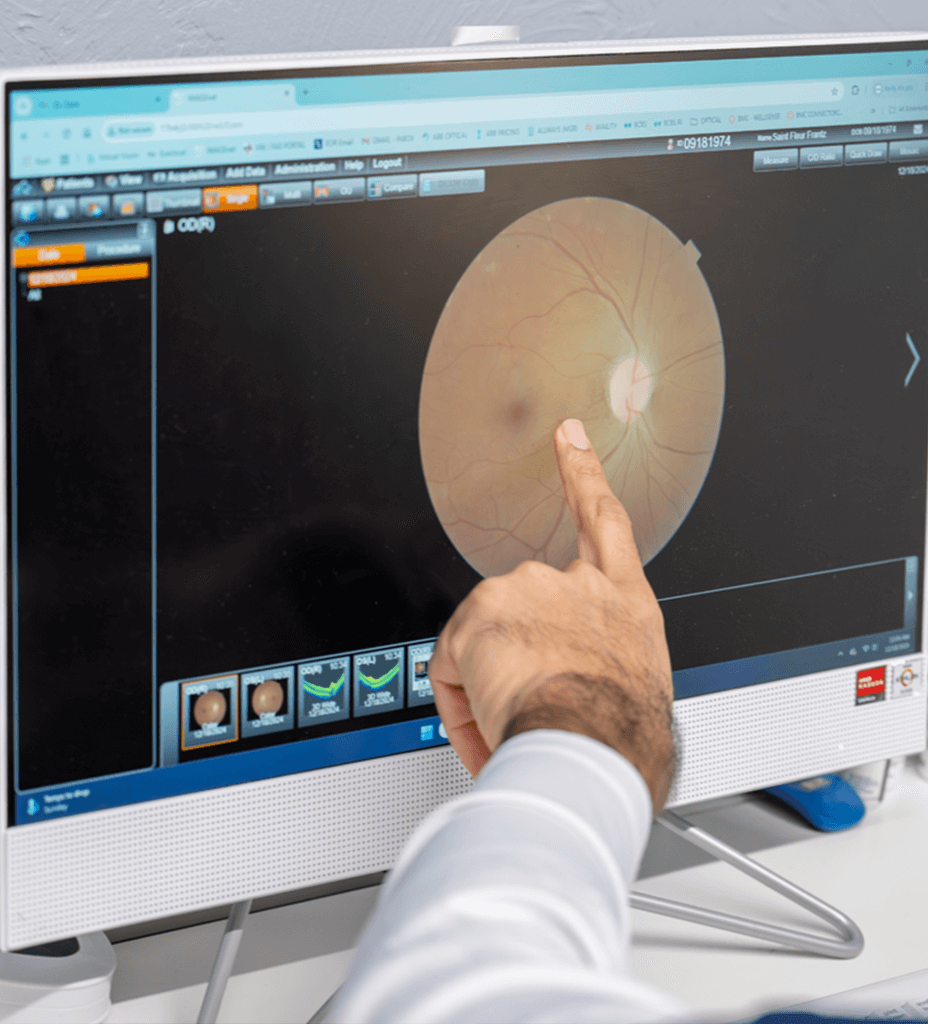Management of Ocular Diseases

Managing ocular diseases requires expert care and advanced diagnostics. Our specialists provide personalized treatment plans for glaucoma, macular degeneration, diabetic retinopathy, and more. Regular monitoring helps preserve your vision and improve quality of life.
Ocular pressure, or intraocular pressure (IOP), refers to the fluid pressure inside the eye. Maintaining normal IOP levels is essential for eye health, as elevated pressure can damage the optic nerve, leading to glaucoma or other vision issues.
- Normal Eye Pressure: Typically ranges from 10 to 21 mmHg.
- Elevated IOP (Ocular Hypertension): Pressures above 21 mmHg can increase the risk of glaucoma, even if there are no symptoms.
- Low-Tension Glaucoma: Glaucoma can also occur with normal IOP levels due to insufficient blood flow to the optic nerve.
In most cases, elevated eye pressure does not cause noticeable symptoms until significant damage occurs. However, acute conditions like angle-closure glaucoma can present sudden symptoms, including:
- Severe eye pain
- Blurred or foggy vision
- Halos around lights
- Headaches or nausea
If you experience these symptoms, seek immediate care from an emergency eye specialist.
Regular eye exams are critical for monitoring and diagnosing issues related to IOP. During your visit, our expert optometrists and ophthalmologists may perform the following tests:
- Tonometry: Measures intraocular pressure using a painless technique with anesthetic drops.
- Visual Field Testing: Detects blind spots or peripheral vision loss, often an early indicator of glaucoma.
- Optical Coherence Tomography (OCT): Provides detailed imaging of the retina and optic nerve to assess damage.
- Pachymetry: Measures corneal thickness, which can affect IOP readings.
Treatment for ocular hypertension or glaucoma focuses on reducing IOP to prevent optic nerve damage and vision loss. Options include:
1. Medication
- Eye Drops: Often the first line of treatment to reduce fluid production or improve drainage in the eye.
- Oral Medications: Used in conjunction with eye drops for more advanced cases.
2. Laser Procedures
- Selective Laser Trabeculoplasty (SLT): Enhances fluid drainage for open-angle glaucoma.
- Laser Peripheral Iridotomy: Creates a small opening in the iris for better fluid flow in angle-closure glaucoma.
3. Surgical Options
- Trabeculectomy: Creates a new drainage pathway to lower IOP.
- Minimally Invasive Glaucoma Surgery (MIGS): Innovative techniques with shorter recovery times.
- Drainage Implants: Devices inserted to regulate eye fluid flow effectively.
Early detection is critical. Regular comprehensive eye exams can help monitor and manage ocular pressure effectively, preventing the progression of glaucoma and preserving your vision.
Tips for Prevention:
- Schedule annual eye exams, especially if you have a family history of glaucoma.
- Maintain a healthy lifestyle, including regular exercise and a balanced diet.
- Avoid smoking and manage systemic conditions like diabetes or high blood pressure.
At our offices in Worcester, Randolph, Lincoln, and Cranston, we offer:
- Advanced diagnostic tools for early detection.
- Comprehensive care from ocular pressure specialists.
- Customized treatment plans, including ocular hypertension surgery and medication management.
Don’t wait until symptoms appear to address high ocular pressure or glaucoma risks. Visit our trusted offices for expert diagnosis and tailored treatment. Protect your vision for years to come!